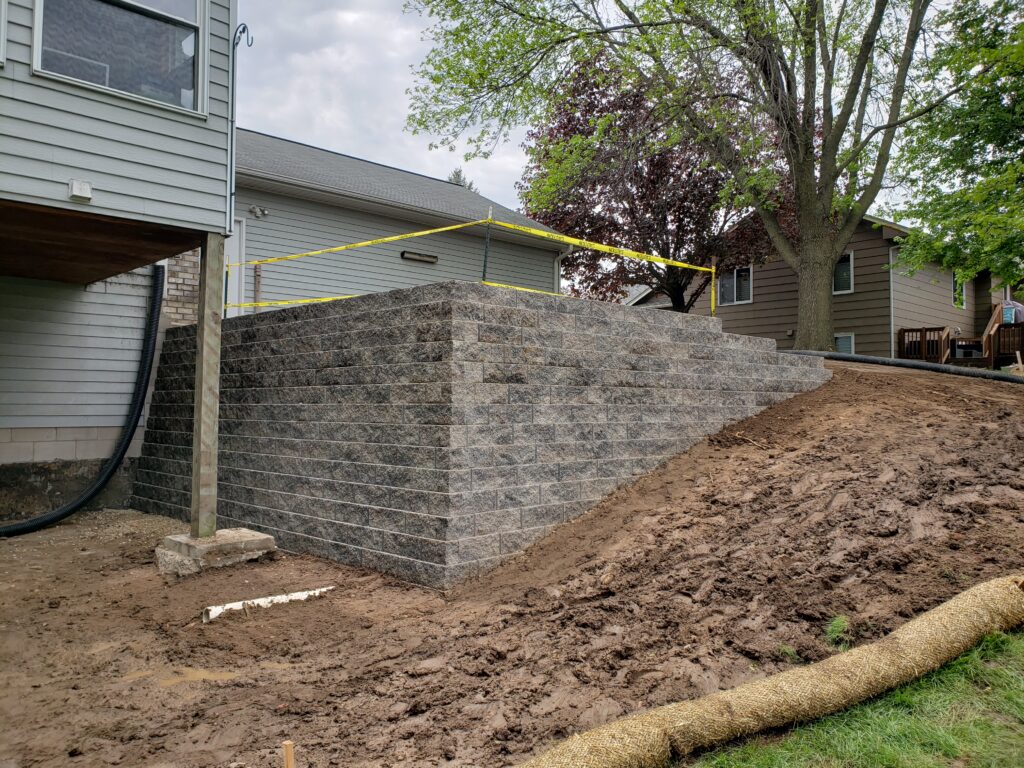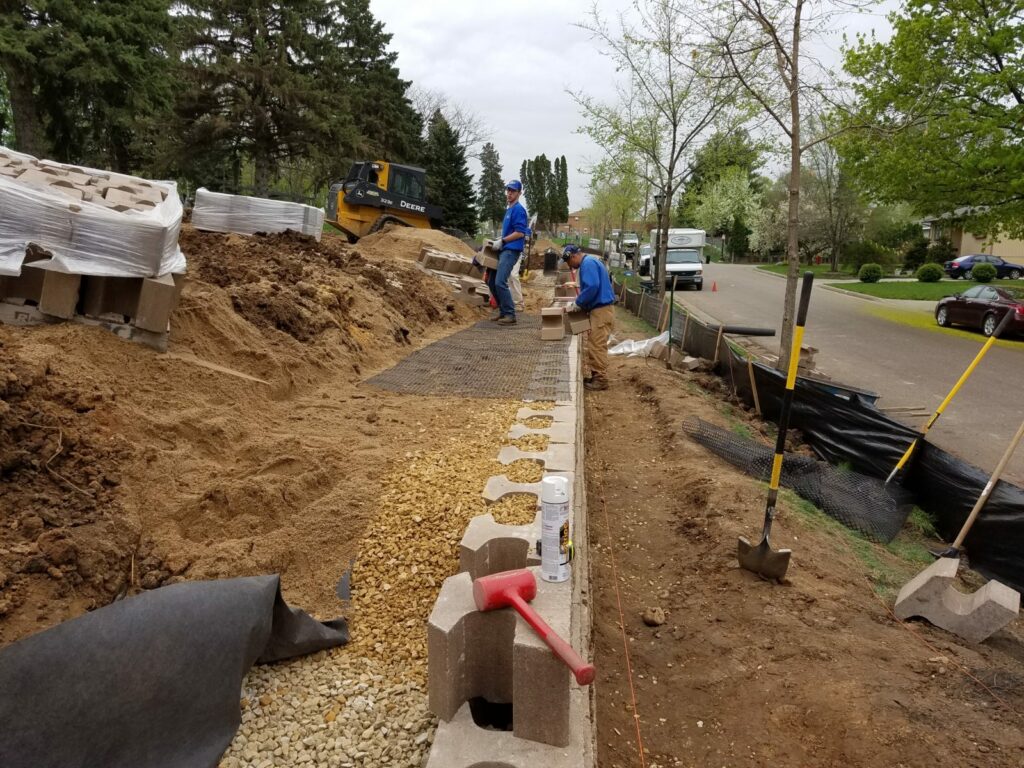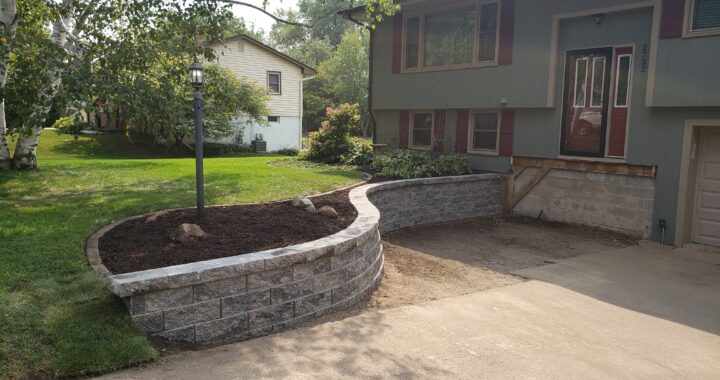Retaining walls are a beautiful way to add a sense of structure and intention to your landscape. You may be wondering about the possibilities of having one installed in your own yard, or you may even be thinking of building one on your own.
But before you can build the retaining wall of your dreams, there are certain key points you need to consider so you don’t end up making some easily avoidable mistakes.
What Is a Retaining Wall?

A retaining wall is a man-made wall that “retains,” or holds back soil. Retaining walls are primarily used to keep soil from eroding or to create levels in sloped areas for more usable space. Depending on your soil and the amount of sloping in your yard, a retaining wall can be an essential structural element of your landscape.
Things To Consider When Planning Your Retaining Wall
If you need to level the sloped ground to create more usable space in your backyard, or if you just want to add a bit more structure to your landscape, a retaining wall is a great solution. But to build a stylish and functional retaining wall will require careful planning on your part, especially if you plan to do it yourself.
Some things to consider before installing a retaining wall:
- Materials: What materials do you want to use for your retaining wall? Some retaining walls are made of either stone or wood, while others are built with concrete or mortared brick.
- Function: What exactly is your retaining wall going to be used for? Do you need it primarily to prevent erosion, or simply to create structure within your landscaping design? This will affect your materials choice.
- Budget: Price can vary significantly among the available materials, so make sure you choose one that meets your requirements while staying within your price range.
7 Common Mistakes To Avoid When Installing a Retaining Wall
Now that you’re ready to get started building your retaining wall, take it from the experts: there are a lot of things that can go wrong. Here are some of the most common mistakes that are made when installing a retaining wall, and how to avoid them!
1. Choosing the Wrong Material
Retaining walls can be made from a variety of materials, but you want to make sure you choose the right materials to ensure your wall lasts for a long time. Your material choice should be dependent on the height, slope, soil, climate, and drainage conditions of your site. For example, if you live in a rainy climate, you’ll want to stay away from using wood, as your retaining wall will more easily rot or attract termites. If your foundational soil is too soft, a brick retaining wall may shift or collapse without the right reinforcement. To help you choose the best material, we recommend consulting a landscape designer or engineer.
2. Not Providing Adequate Drainage
One of the most common problems with retaining walls have to do with drainage. Your wall is designed to hold back soil, and soil holds water. So without proper drainage, water can easily build up behind the wall, causing it to bulge, crack, or even collapse! To avoid this, you’ll want to install a perforated drain pipe and a layer of clear backfill gravel. This will allow the water to drain through the soil and avoid any hydrostatic pressure on your retaining wall.
3. Forgetting the Frost Line
In colder climates like Minnesota’s, it’s essential to consider the frost line when installing your retaining wall. The frost line is the depth at which the soil freezes in winter, and it varies depending on your location, which you can check here. If your wall is not built below the frost line, the freezing and thawing process can cause the wall to shift, crack, or lean over time. To avoid this, you should dig your wall foundation at least a foot below the frost line, and use a compacted gravel base to prevent moisture from reaching the wall.
4. Too Much Weight Behind the Wall
The higher your wall, the more weight it’s going to have to carry. If you have a particularly high wall you’ll want to make sure that it’s properly reinforced to stand up to the pressure. You can do this by extending the footing (i.e., the reinforced concrete at the base of the wall). You might also need to install anchors or tiebacks for added support. To make sure everything is up to par, we highly recommend consulting a professional so you don’t end up with any major problems down the road.
5. Inadequate Footing
Speaking of footing, different types of retaining walls will require different types of footing. For example, a poured-in-place concrete wall will have a different footing requirement than a segmental or wooden wall. If you don’t install adequate footing, your retaining wall will likely tip forward or bulge out over time. If you plan to use more flexible materials such as stone, wood, or bricks without any mortar, you can use a compacted stone footing. For walls built from concrete, cement, brick, or cinder blocks, you’ll want durable, concrete footing.
6. DIYing a Complicated Wall
If you want a simple retaining wall that’s just a foot high, you can definitely flex your DIY skills to get the project done. But if it’s any more complicated than that — if you want the wall to be taller, made with heavier materials, or if it’s on a steep slope — we highly recommend getting some help from the professionals sooner rather than later. You don’t want to have to call them in after the fact and pay hundreds of dollars in repairs!
7. Not Maintaining Your Wall
If you’re committed to installing a retaining wall, you need to understand that it’s not a set-it-and-forget-it situation. To ensure your wall lasts, you need to maintain it properly, which means checking regularly for any cracking, bulging, or leaning, and making those repairs. It also means cleaning the wall surface of the wall, monitoring the drainage system, and pulling any weeds growing up around the wall.
Trust The Professionals at McDonough

Retaining wall construction and installation requires a high level of planning, so be sure to enlist the help of an experienced professional. At McDonough Landscaping, our landscaping professionals have the expertise you need to avoid all of these common mistakes. When you choose McDonough, we’ll work closely with you to plan, design, and install the retaining wall of your dreams. So don’t wait! Contact us today, and let’s talk about your project.
